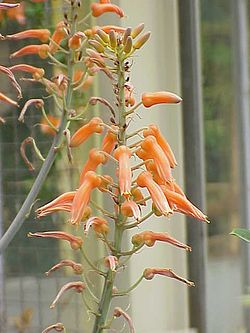| Aloe lateritia | |
|---|---|
 | |
| Scientific classification | |
| Kingdom: | Plantae |
| Clade: | Tracheophytes |
| Clade: | Angiosperms |
| Clade: | Monocots |
| Order: | Asparagales |
| Family: | Asphodelaceae |
| Subfamily: | Asphodeloideae |
| Genus: | Aloe |
| Species: | A. lateritia |
| Binomial name | |
| Aloe lateritia | |
Aloe lateritia is an aloe widespread in open grassland and rocky bushland of East Africa.

